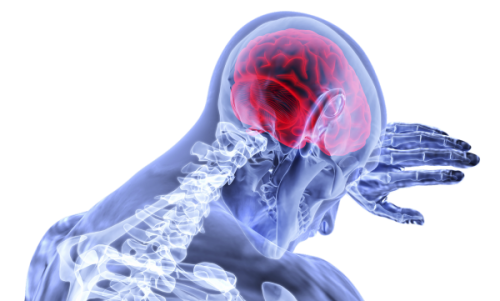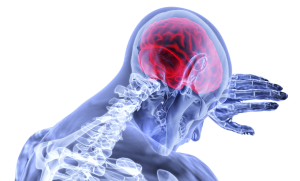In Part One of this series, we explored the elusive, unpredictable nature of pain.
Why might you feel chronic pain or discomfort in muscles and joints that haven’t been damaged? Why does pain come in so many “flavors”? And why/how can a change in body position or activity affect the pain you feel?

- The reason pain is such a mystery to us is that pain is actually a conclusion made by the brain. The brain is presented with information from all the body’s parts, and your sensation is simply a part of the brain’s final conclusion about the total information present.
- The body works as a system. Part of its genius is in its sophisticated setup for communication within itself. The body is one continuous, cohesive system that allows every part to be aware of, and work with, the other parts to achieve the goal of operating efficiently.
- Each of your body's movements is a whole-body task that requires an internal, whole-body "solution" designed by your nervous system. The quality of your body's solution-- how you move and how you feel during any specific movement-- is a result of the quality of information available to your nervous system at that moment.
- Pain can be an information problem: Pain may be part of your nervous system's interpretation of a "solution" for which it didn't have adequate information to solve.
SOLVING THE PUZZLE
The more knowledge your system has about how to approach a task, the better quality the outcome will be.
Now . . . can you actually change the information in your system and change the way you’re feeling? And where can your brain acquire the information it needs?
First, let’s talk about exactly what information your system needs to have in order to move well and feel good.
Your joints are built to function in certain ways:
- Each joint in your body is built to move through specific planes of motion (specific directions)
- Each joint in your body is built to move through-- and stay within-- specific ranges of motion (specific positions)
 And what controls the movement of your joints? That’s right, muscles! (Other materials, such as tendons and ligaments, also play important roles in joint stability and control. Today’s focus in on the muscle system since it’s an aspect over which we have some voluntary control.)
And what controls the movement of your joints? That’s right, muscles! (Other materials, such as tendons and ligaments, also play important roles in joint stability and control. Today’s focus in on the muscle system since it’s an aspect over which we have some voluntary control.)
Skeletal muscles (i.e. the ones that move us) have one job: contract to produce force. This function of muscles serves multiple roles in the body, such as moving each joint in the ways it was designed to, and to help stabilize and preserve your joints.
In order to function optimally, muscles need to be really good at a couple of different things when called upon by the nervous system:
- Muscle need to contract with proper magnitude (contract hard enough)
- Muscles need to react with proper reaction time (contract fast enough)
Your system needs to have adequate information about how to contract each of your muscles under countless conditions in order to accomplish healthy overall muscle function. High-quality communication between your nervous system and muscle system will allow your muscles to do their jobs, supporting and controlling your joints and creating healthy, pain-free movement.
If a muscle isn’t able to contract hard enough or fast enough under certain conditions, then your body’s “solution” for movement will be mediocre at best. The consequences could include muscle compensation (where other muscles have to work harder to get the job done for the underperforming muscle), tightness, weakness, pain, and eventually potential damage to the joint itself.
MUSCLE RESTORATION
 As an Exercise Physiologist, I work with clients to help them build strong, stable muscles and joints so they can do the activities in life they love . . . and feel good while they do it! Because each individual has a unique background, history of injuries and surgeries, and goals they’d like to accomplish, each individual needs a unique strategy to help them reach their goals.
As an Exercise Physiologist, I work with clients to help them build strong, stable muscles and joints so they can do the activities in life they love . . . and feel good while they do it! Because each individual has a unique background, history of injuries and surgeries, and goals they’d like to accomplish, each individual needs a unique strategy to help them reach their goals.
My job is to tease out the specific situations and positions in which your muscle(s) aren’t contracting optimally. I help pinpoint the areas of poor information within your muscle system and help provide new, high-quality information that will improve your muscles’ ability to contract to control your joints in a healthy, productive way.
Muscle Restoration is a process I use extensively with clients to improve the information and communication between the nervous system and the muscle system, paving each client’s unique path to their optimal strength and stability.
The Muscle Restoration process features these key concepts as the foundation of its strategy:
Targets the sources of your chronic injury, muscle imbalance, tightness, and pain by identifying areas within your muscle system with poor contraction, control, and endurance
Provides targeted information and “re-education” to your nervous system and muscle system, restoring proper communication and function exactly where you need it
Ensures proper collaboration of your muscle system’s parts as one cohesive system, as it was designed to do, to minimize “compensation” (which is really just a mediocre solution on the part of your brain)
Facilitates an ongoing, customized exercise prescription to strategically improve the performance of your muscles and joints for years to come
USING EXERCISE AS A PROBLEM-SOLVING TOOL
Now, let’s check out a real-life example of how acquiring better-quality information throughout your system can change your feelings of muscle tightness, weakness, and pain. Meet Kate . . .
 Kate (whose name has been changed for anonymity), has been active in sports her entire life. Now 55 years-old, she continues to love her hobbies of hiking, gardening, and traveling. Recently, Kate came to see me with low back pain that occurs when she stands for a long period of time or when she raises her arm overhead.
Kate (whose name has been changed for anonymity), has been active in sports her entire life. Now 55 years-old, she continues to love her hobbies of hiking, gardening, and traveling. Recently, Kate came to see me with low back pain that occurs when she stands for a long period of time or when she raises her arm overhead.
1. Identify
First, we needed to locate the areas in Kate’s muscle system that were lacking adequate information about how to contract optimally.
We assessed how well her muscle system could control each of her major joints through each cardinal (primary) plane of motion.
A thorough assessment of Kate’s muscle and joint control revealed a significant area of poor control when attempting to elevate her right scapula (shrug her right shoulder). When I asked her to shrug her right shoulder, it took her a moment to “figure out” how to do it. When she overcame the delay and eventually accomplished the task, she reported it felt shaky and hard to control (especially compared to how the left shoulder shrug felt). Kate was not able to control her scapular elevation against even a small amount of resistance, either.
Kate hadn’t been experiencing right shoulder pain, and she has no history of injury of the shoulder. She did, however, display a lack of information about how her muscles should contract to control her shoulder. As a result, the brain’s conclusion about “how it went” produced a sensation she didn’t like: Kate reported, “When I shrug my right shoulder, I feel pulling and discomfort in my lower back.”
It’s possible that Kate’s lack of shoulder control could be a factor in the back pain that prompted her visit to me. Kate’s system was in need of additional, higher-quality information to complete this task.
2. Address
Once we identified the areas of her system that needed better information to control itself, we supplied her system with new information to interpret, process, and integrate into its problem-solving repertoire.
Kate and I went through several rounds of carefully applied, unique “lessons” for her body to pick up and use as new pieces of information in her nervous system’s arsenal to control this missing element of her shoulder & scapular control.
After improving her system’s ability to understand right scapular elevation, Kate was able to complete the movement with less delay and with better quality. Her brain produced a new conclusion based on this new information, and the movements with which she originally reported low back pain were now easy to accomplish pain-free.
3. Reinforce
I sent Kate home with a customized exercise prescription in the form of “homework” exercises. These precise, targeted exercises will help Kate’s system further integrate scapular elevation into her information arsenal until our next session.
4. Progress
A few days later, Kate came back for her next session. She reported her low back was feeling much better, even after a long walk and standing for an hour working in her kitchen.
During this session, we continued to progress Kate’s ability to control her shoulder. Because the body operates as a system, we tested her ability to contract and control not only in her shoulder, but in positions that required her shoulder to work in conjunction with her spine, neck, and other areas of her body. As we found positions that Kate was unable to control, we repeated the process of giving Kate’s system lessons on how to control her system under those conditions.
We also progressed Kate’s “homework” exercises to reinforce the improvements in control she made during this session.
As Kate continues to improve the quality of her system’s information, we gradually progress the challenges we test during her session work. Soon, Kate was back to hiking, gardening, and traveling– all of her favorite activities– and was confident and pain-free!
ADDRESSING THE SOURCE, NOT THE SYMPTOMS
During our session the day before, if we had tried to give Kate exercises to “strengthen” her back, which was already aggravated, my guess is that we wouldn’t have had such a successful result. In fact, we may have aggravated her back even more!
The area of Kate’s pain (her back) wasn’t the source of the pain. Kate’s problem was an information problem.
INFORMATION IS POWER
Exercise is an amazing tool for many reasons. A largely unconsidered power of exercise is in its use as a stimulus we can use strategically to add, change, and edit information in an individual’s nervous system. Being able to use this power of exercise is why I love my job as a Muscle Restoration Specialist.
When your body possesses a set of diverse, robust information about itself, it has options. The more problem-solving options your brain has at its disposal, the more diverse, robust solutions your body can call upon to solve a wide range of problems. More information = more solutions!
When you’re dealing with chronic muscle tightness, compensation, or pain when you move, always talk to your doctor to rule out significant issues. But if you find yourself in a position that so many others do — where you’ve tried just about everything to solve your tightness and pain and nothing has worked — you may want to start thinking about your body in a different way. When you improve the quality of information and control in your system, it’s very possible to learn how to move better and feel better!
References:
- Ingraham, Paul. “Pain is Weird”. PainScience.com. PainScience.com. 27 February. 2020.
- “Systems Engineering: A Great Definition.” Kitchensoap.com. Kitchen Soap. Web. 20 March. 2020.
- “The Nervous System”. Mcb.berkeley.edu. University of California, Berkeley. Web. March 20. 2020.
- “Body Systems”. Sciencelearn.org. Science Learning Hub. Web. 20 March. 2020.

Jessica Cahen, MS, CMES, CHN is an Exercise Physiologist and Holistic Nutritionist. Her company, Perfectionist Health LLC, offers Muscle Restoration and Medical Exercise services in Columbus, OH as well as holistic health & wellness coaching worldwide. Read more about Jessica and Perfectionist Health LLC at www.perfectionisthealth.com.
Let's Be Friends.
Have health and wellness delivered straight to your inbox . . . and be the first to know about new fitness classes and Health Strategy Course dates!




Pingback: The Pain Puzzle - Perfectionist Health